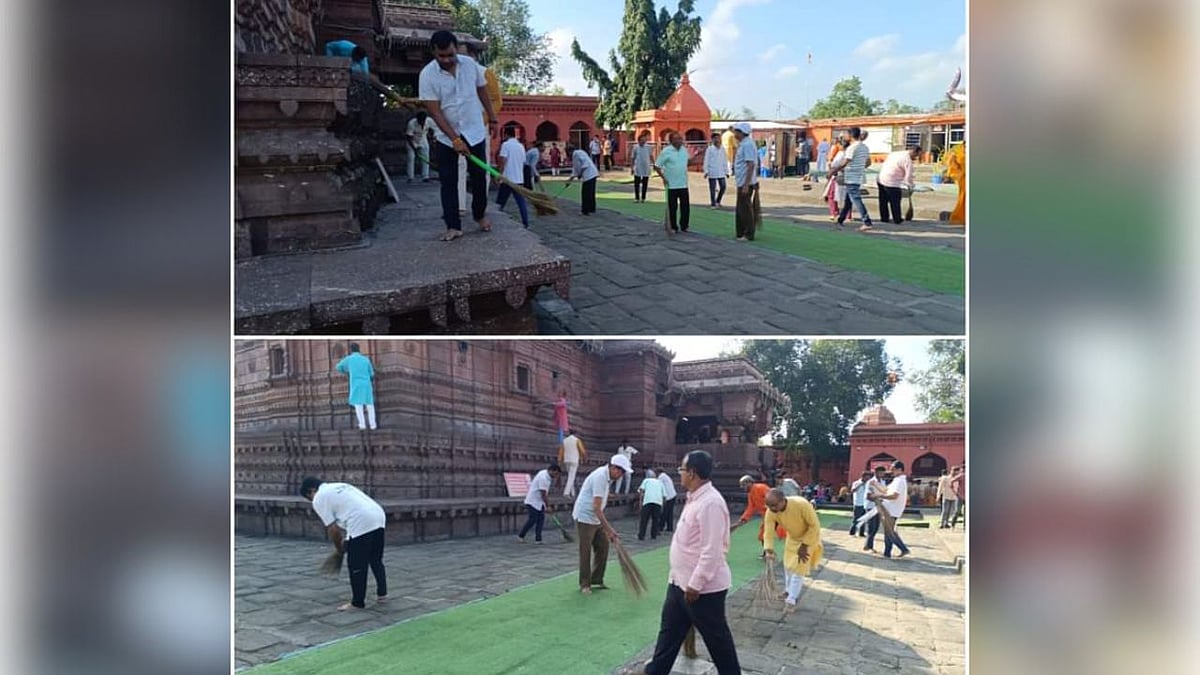This book investigates the power of a symbol to transform society, studying Mahatma Gandhi’s use of clothing as a metaphor for unity, empowerment and liberation from imperial subjugation.

There never has been in all of history an empire greater than what the British established which spread from one end of the world to the other. The sun, it was said, never set on it, which was literally true. But has there been any revolution in the entire world, which set out, and achieved its aim, through eco-political subversion? Except in India?
That was done by one man and with one means: Gandhi through his message of khadi and Swadeshi. It was sartorial subversion at its most effective assertive. And it succeeded beyond measure.
As the author of this brilliant study of the Swadeshi Movement sums up “it exploded the myth of the civilising mission of colonial powers and gave birth to the world’s largest democracy”. With swadeshi, Gandhi gave his people a power they had never experienced before. To quote Gonsalves again, “The axe was laid at the root. The Imperial lie stood exposed. The garb of ‘the mission to civilize the natives’ under which the loot had been carried out for centuries was stripped bare”.
More, as Gonsalveas sums up in his thesis: “Never before were pieces of clothing on the sweaty backs of skinny peasants infused with such holy defiance. Never before did the slender thread of hand-spun yarn unbraid the industrialised fabric of the greatest empire on earth. It took a little brown man in khadi dhoti, to consign it to history.” To understand what all this means, one must study the economic history of India and the British assault on the socio-cultural life of the ordinary Indian from 1768 onwards.
First the British destroyed India’s thriving textile industry with singular deter-mination. Second, the British sought to impose on India a sense of inferiority never before attempted by any foreign conqueror, the British discouraged their own people from accepting any form of Indian culture. On the other hand they encouraged Indians to accept British concepts of dress and deportment.
It left Gandhi with no other option but to turn to the loin cloth around his waist, a khadi shawl around his shoulders and sandals on his feet to show the British what their destruction of the Indian textile in-dustry has done to the people. He even had the courage to call on King George V at Buckingham Palace, thus dressed. When asked if he ever felt embarrassed being a trifle under-dressed, he had the wit, and the courage, to say: “Why should I be embarrassed? His Majesty had enough clothes on for both of us.” It was a soft slap on the monarchs face and well-deserved, too.
Two chapters in this revelatory book make it clear how the British planned to demolish India’s greatness and get it to accept servility. One is titled ‘The Rape of India’. This chapter shows clearly how, step by deliberate step, the British wiped out India’s splendid textile industry which was once the pride and wonder of the world. The second on ‘Inferiorisation of People’ is an attempt to show how the British sought to wash out India’s self-respect and self-confidence. The British technique was well summed up by Macaulay who wrote: “Who could deny that a single shelf of a good European library was worth the whole native literature of India…all the historical informa-tion which has been collected from all the books written in the Sanskrit language is less valuable than what may be found in the most paltry abridgements used at preparatory schools in England.” It showed British disdain and arrogance at its worst.
Indians, sadly, let him get away with it, until, of course, Gandhi came on the scene. Prior to Gandhi, the perception of Indians as inferior to the British had been tacitly accepted. Shockingly those who thought and acted differently risked social ostracism and even courted charges of sedition! Gandhi not only stood up to such rascality and hypocrisy but got the nation to follow him. His strategy succeeded. His challenge, as Gonsalves as noted, was directed not merely to the empire alone, but also to follow Indias accustomed to being docile subjects.
The basic mantra was swadeshi. Gandhi felt – and quite rightly – that he could bring the British to their knees through swadeshi. The export of British cotton goods to India that had touched its peak at the turn of the 19th century experienced a decline of 14 per cent in 1929 and a drop of 42.4 per cent in the boycott year 1930. When the boycott was at its height between October 1930 and April 1931, the decline was 84 per cent. British exports to India dropped by 530,000,000 yards and half of the 600,000 employees of Lancashire’s cotton industry lost their jobs. That was the power exerted by just one man and through just one means: swadeshi.
But it wasn’t all that easy as it sounds on paper. It should be remembered that when Gandhi took over the Congress it was largely an elite organisation of the rich. To get such people to accept his novel technique took time a great deal of persuasion. To get them again to accept native standards of clothing, the burning of foreign cloths and the use of khadi took time, but in the end Gandhi won. As Gonsalves rightly notes: “Even his (Gandhi’s) contemporaries disbelieved him when he said that the ‘message of the spinning wheel is much wider than its circumference’. Not many would have imagined that its circumference embraced the whole world.
As Carl Sagan, whom Gonsalves quotes, said: “Gandhi’s militant non-violent non-co-operation freed a quarter of the world from imperialism…He stripped imperialism of is romance and gold trim and revealed it to be simple theft. He made it much easier for other coun-tries to win their freedom.” In the bare span of just 37 years after India became free, forty four other nations, that once belonged to the British empire were freed as well. Never in the field of human conflict has so much been owed by so many to just one man – Gandhi! Gonsalves’ sstudy is exceptional – and brilliant, and, may one add, deeply emotive.
Gandhi once said: “Place Khadi in my hands and I shall place swaraj in yours’. This book as the introduction rightly notes, investigates the personal, eco-political, psycho-cultural, socio-religious and philosophical underpinnings that contributed to making Gandhi’s bold assertion a reality. Gonsalves has done a stunning job in recreating history and giving new meaning to an old tenet.
M V KAMATH










